- Register
- Log in to Tune-In
- Wishlist (0)
-
Shopping cart
(0)
You have no items in your shopping cart.
Beatles News
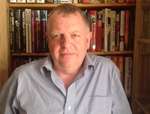
The show, in February 1963, was the only time The Beatles played Sutton Coldfield and took place just as their second single Please Please Me was storming up what was then known as the hit parade.
Richard Houghton is hoping to trace members of the audience from that night in 1963 to share their memories of seeing John, Paul, George and Ringo for what he is terming a ‘people’s history’ of the group.
Richard said:
“There have been lots of books about The Beatles but I’m trying to tell the story of their shows from the point of view of the audience. Britain was a very different place then to what it is now and I’m hoping to capture the memories of the people who were probably teenagers then and who are probably grandparents now so that their recollections can be captured for all time. The show in Sutton Coldfield at what was also known as St Peter’s Church Hall was one of the earliest The Beatles performed in the UK outside Merseyside.”
Richard is the author of You Had To Be There: The Rolling Stones Live 1962 – 69, which tells the story of the Stones early concerts in the words of their fans. Now he is looking to repeat the exercise with his boo details
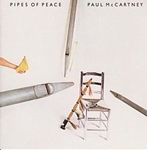
“Hey Hey” holds a special significance on Paul McCartney’s Pipes of Peace, and not just because it’s the lone instrumental. It’s also one of just three songs on the project not written solely by McCartney: The other two feature Michael Jackson.
For bassist and co-writer Stanley Clarke, “Hey Hey” represents something else: The fullest flowering of a new friendship. The song gets off to a raucous start, before Clarke steps forward for a memorably jazz-inflected interlude. That Paul McCartney would move aside for a fellow bassist says a lot about their mutual admiration for one another.
Clarke, in an exclusive Something Else! Sitdown, praises the former Beatles star as “a very melodic player. Melody just comes right out of him. That’s only natural for him to play the bass like that. He does it without thinking. He’s a writer who sings songs, so it was only natural when he plays the bass, his lines would be very melodic.”
Over the years, Stanley Clarke has made a name for himself in fusion circles, even while collaborating with rockers from Stewart Copeland to Jeff Beck to Ronnie Wood. He ended up contributing to both Pipes of Peace, released details

A suit belonging to John Lennon is to be sold at auction this week, having previously been lost for 40 years.
The beige, collarless mohair suits were worn by The Beatles during the early 60s and were made by London tailor Dougie Millings.
Lennon's suit was originally donated by manager Brian Epstein, along with the three other members' jackets, to London's Madame Tussauds for the first wax works of the band. However, it was misplaced and only found in 2006 at a warehouse owned by the company.
As reported by the Daily Express, the item will be sold on Friday (October 30) by online auction house Fame Bureau. Its value is estimated at £150,000.
James Wilkinson, of the Fame Bureau, said: "This suit changed attitudes and was a major cultural change. Before they had this makeover, the Beatles were rockers. They idolised Elvis and wore black leather jackets."
"But Brian Epstein had the foresight to change their appearance to a more wholesome look so they would appeal to a much wider audience, and these suits were a major part of that image. The result turned the Beatles into a clean-cut, media-friendly powerhouse. The suits traversed the Atlantic and the style was later imitated by ma details
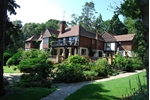
It was once home to Ringo Starr and John Lennon and even appeared in The Magical Mystery Tour – for decades Sunny Heights has been a place of pilgrimage for fans of The Beatles.
But Starr’s former estate is now set for demolition after being bought by Russian oligarch Vladimir Scherbakov, 55, who wants to bulldoze the famous home and build a new one in its place.
After the drummer bought the Surrey mansion in 1965, it became where band retreated from the public eye. It even had its own bar on site, The Flying Cow, where Starr would play host to his friends away from the limelight.
He bought the mock-Tudor mansion with his then wife Maureen Starkey for just £37,000 ($57,000). Just a short drive from both Lennon’s Kenwood mansion and George Harrison’s Kinfauns estate, it quickly became an important part of life among the Beatles.
One of the scenes from their film The Magical Mystery Tour, when Starr projected images onto George Harrison’s face, was filmed in its extensive gardens. They also used it as the location for photo shoots. Starr eventually moved out in 1968 and it was briefly called home by Lennon and Yoko Ono, after they sold their nearby Kenwood details
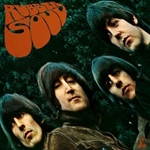
A semi-autobiographical track, “You Won’t See Me” was inspired by Paul McCartney’s rocky relationship with then-girlfriend Jane Asher. The song represents the final recording session for 1965’s Rubber Soul, as well as the longest track the Beatles had recorded to date. Its polished sound also belies the fact that it resulted from a virtually non-stop, 13-hour recording session — a frantic attempt to finish the album in time for the lucrative holiday season.
After Asher temporarily moved out of her parents’ house to star in a staging of Great Expectations at the Old Vic theater, McCartney frequently found it difficult to contact her. “You Won’t See Me” reportedly resulted from his frustration at his girlfriend’s busy schedule. However, Paul McCartney also wanted to pay tribute to one of his greatest influences: Motown.
He told biographer Barry Miles that he wanted to mimic bassist James Jamerson’s melodic approach to the instrument, a key element of the Motown sound. The foundation of the melody, he told Miles, is built on a two-note progression. “I had it high up on the high E position, and I just let the note on the B string descend a details
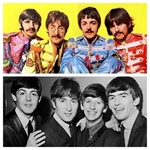
Most discussions about art eventually hit the wall of the argument that "taste is subjective". Nevertheless, in terms of pop music, there is near consensus that the Beatles were the greatest and most important band of all time. This post is dedicated to the minority that is still not convinced.
The image above is emblematic. How much time would you think separates the two photographs? Eight, maybe 10 years? No, four! The bottom photograph is from 1963 and the top one from 1967. But the group's exponential evolution of course goes way beyond looks. The immense and diverse musical production of the Beatles all occurred within a period of less than 10 years. The first album, Please Please Me, is from 1963, the last Let It Be, from 1970. In this incredibly short period, they composed numerous treasures in an increasing level of sophistication, innovation and versatility, and in a way that hasn't been replicated by any other band.
To illustrate it, the following songs were recorded, album after album, from 1963 until 1970 (those who don't know them should check them out, preferably in order): "Love Me Do", "It Won't Be Long", "And I love Her", "Help", "In My Life", "We Can Work It Out", "Eleanor Rigby", "A Day in the details

Tom Frangione, the host of Beatles radio show Things We Said Today, is a big Mets fan, so much so that he wants to believe with all his heart that John Lennon contributed to the “Let’s Go Mets” chant that can be heard at the end of musician David Peel’s “The Ballad of New York City," a track from Peel's 1972 album, The Pope Smokes Dope, which Lennon and wife Yoko Ono produced and was released on Apple Records.
But Peel tells Billboard, “Lennon never said that. He never played on any of my songs. It was me and my hippie friends. Everybody who did the chanting was from the Bronx.”
The Mets, who hail from Queens and won the World Series in 1969, were the hot New York baseball team at the time. Even though Peel is a Yankees fan, he said they chanted “Let’s Go Mets” “because the Mets were the underdogs and the Yankees were the capitalists.”
Lennon was in the control room when Peel and his fellow singers belted out the chant, but he didn’t join them. “He didn’t want to upstage me,” Peel recalls. “He did what I wanted to do.”
Lennon and Ono met Peel in 1971 in New York’s Washington Square Pa details

The Beatles will reissue their Number One singles compilation 1 as a 2-Blu-ray/1CD collection – now titled 1+ – that boasts 27 songs and their accompanying promo videos alongside 23 more restored videos used for promotional purposes but never formerly released. That Blu-ray of alternate versions and rarely seen short films will include the Beatles' original video for the Sgt. Pepper's Lonely Hearts Club Band closer "A Day in the Life," with the 1+ restoration of that clip premiering via Mashable.
In the video, largely filmed between 8 p.m. and 1 a.m., footage of the Beatles messing around with some of their friends, including the Rolling Stones' Mick Jagger and Keith Richards, is intercut with images of an orchestra preparing to perform during the early 1967 recording sessions for the track.
"These videos and films are spectacular reminders of the era we lived in," Paul McCartney said in a statement to Mashable. "They also rock!" Ringo Starr added of "A Day in the Life," "If you listen to my playing, I try to become an instrument; play the mood of the song. For example, 'Four thousand holes in Blackburn, Lancashire,' — boom ba bom. I try to show that; the disenchanting mood. The drum fills are details
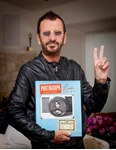
He'll always be known as the Beatles' drummer, but Rolling Stone Films sheds light on Ringo Starr's other life's work in a new original short, "Ringo Starr: Photographer." Directed by veteran Rolling Stone photographer Mark Seliger, the film interweaves candid interview footage, clips of Starr drumming solo on his gorgeous Ludwig kit and vintage Beatles photos from his extensive archive. "I think I really got more serious about it, more excited and interested in it, in the Beatle era," Starr says of his work behind the camera. "Photography became my passion alongside playing, really."
Starr's incredible archive — preserved in a new book, Photograph — includes intimate shots that only a fellow band member could have captured: George Harrison goofing off in the studio, John Lennon on the beach in Tobago with a sea urchin stuck in his foot. As the images progress chronologically, we see how the psychedelic era rubbed off on Starr's photography much as it did on the Beatles' music, leading him to experiment with fisheye lenses and multiple exposures.
"These photographs allow us a very intimate peek inside the Beatles' world," says Seliger. "With his camera by his side, Ringo had the rare ability to details

An incredibly rare copy of a controversial Beatles album cover in which the Fab Four posed as butchers draped with decapitated babies and chunks of meat has emerged for sale for £4,500.
The original cover of The Beatles' album Yesterday and Today caused outrage on its release in 1966 - but by that point US record company Capitol had already printed 750,000 copies of it.
The Beatles are said to have submitted the gruesome image for use on the cover in retaliation for Capitol insisting on the release of the album, which was made up from leftover tracks from the band's previous two UK releases. Inundated with complaints, the record company soon withdrew the albums but in order to save money they simply stuck another photograph on top of the offending cover.
When word got out among fans of the modification many tried - unsuccessfully - to peel off the new cover to reveal the original image.
A handful of the unmodified covers survived and untouched copies of the original cover known as 'first state' are now prized collectors' items.
The album cover, known among fans as the 'Butcher cover', is owned by a former employee of Capitol Records who worked in the company's mail room.
Sou details
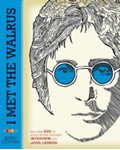
In 1969, a brave 14-year-old boy named Jerry Levitan armed with a tape-deck snuck into John Lennon’s hotel room in Toronto and charmed the legend into doing an interview about peace, music, the USA, life and the Bee Gees. Thirty-nine years later, Levitan offered the interview to the world.
Only he did it brilliantly.
I Met The Walrus is an animated short, in which Lennon’s original voiceover comes to life through wonderful pen animation by the tremendously talented James Braithwaite.
Listen to Lennon’s detached yet passionate musings on politics, human nature and marijuana. And appreciate the irony of how true some of what he said 39 years ago rings today.
"It’s up to the people. You can’t blame it on the government and say, ‘Oh, they’re doing this, they’re doing that, oh, they’re gonna put is us into war.’ We put ’em there. We allow it. And we can change it. If we really wanna change it, we can change it.” ~ John Lennon
Levitan’s once-in-a-lifetime Lennon adventure is now available in book form
By: Maria Popova
Source: Brainpickings

The Nation's Favourite Beatles Number One
The Beatles were a musical sensation like no other. Since exploding onto the music scene in the early 60s, the band has had an unparalleled musical and cultural impact on Britain and the world for over fifty years.
The Nation’s Favourite Beatles Number One tells the stories behind some of the greatest Beatles songs ever. With interviews from Beatles’ insiders including musicians, friends, fellow performers and celebrity fans, we’ll hear about the stories behind the Fab Four’s best-loved hits.
These are the stories behind the 27 songs that reached number one here and in the U.S – from She Loves You to Paperback Writer, Hey Jude to Let it Be – as the show hears from the people who were there to witness in person the extraordinary rise and rise of The Beatles.
Some of the celebrity fans featured in the show include Michael Palin, Sandie Shaw, David Tennant, Twiggy, Bjorn Ulvaeus, George Ezra, Jake Bugg and Sue Johnston, who was even a Cavern club regular herself.
Across 120 minutes, this prime-time celebration of the biggest and most influential band the world has ever seen uses extraordinary footage from a number details
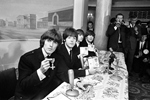
Fifty years ago it was rare for pop stars to make it on to the Honours List but that all changed on October 26, 1965 - the day The Beatles collected their MBEs from Buckingham Palace.
With four thousand screaming teenagers gathering at the gates of the Queen’s official London residence before the 11am investiture, it must have looked more like the queue for one of their concerts than the scene of a usually sombre ceremony - but patient fans got their reward when the band turned up together in John Lennon’s Rolls Royce.
The ceremony took place at 11am story was front page news in the Liverpool Echo that evening as you can see in our gallery of pictures from the day.
Despite several years of stage experience, the band were nervous before meeting the Queen - which led to one particular urban legend springing up about their day at the Palace.
John Lennon claimed later that the band smoked marijuana in the toilets beforehand to calm their pre-gong jitters (these were pre-smoke detector days after all) although George Harrison said later: “We never smoked marijuana... What happened was we were waiting to go through, standing in an enormous line with hundreds of people and we were so n details
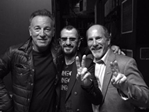
Ringo Starr got by with a little help from his friends -- and some famous folks in the house -- at his Sunday, Oct. 25 show at the State Theatre in New Brunswick.
Bruce Springsteen watched the show from the audience with his mom, Adele Springsteen, after stopping backstage to say hello and goodbye to the Beatles legend, according to the theater.
Starr posted a pic of himself and Springsteen and a fella named Wayne on his social media sites prior to the show.
"Great to see Bruce," said Starr.
The Boss performed with Starr and his All-Starr Band in 1989, when Clarence Clemons and Nils Lofgren were in Starr's band, at the then-called Garden State Arts Center in Holmdel. Springsteen has a history of performing at the State Theatre going back to the mid-1970s. The last time he took the stage there was in in 1995, when he began his "The Ghost of Tom Joad'' solo acoustic tour at the venue.
The latest version of the All-Starr Band includes Todd Rundgren, Gregg Rolie from Santana, Steve Lukather from Toto and Richard Page of Mr. Mister.
By: Chris Jordan
Source: Asbury Park Press

A giant image taken by Paul McCartney’s photographer daughter is helping to illuminate Newcastle this week and turn the focus on National Adoption Week. Mary McCartney’s eye-catching photograph of a small boy is being projected onto Newcastle Civic Centre and other city centre buildings to raise awareness of the need to find more people willing to adopt. Monday evening’s switch-on coincided with an Adoption Information Evening being held at the Civic Centre, which featured the dramatic projection on its main exterior wall.
There are currently 4,290 children in the care of local authorities in the North East – 505 of them in Newcastle. The average age of youngsters enduring the longest wait to find an adoptive family is just four years old, so McCartney’s image includes the caption “Too old at 4?”
The celebrity photographer - daughter of The Beatles star and his late wife Linda - has been working with the information organisation First4Adoption which organises the annual National Adoption Week. Her illumination will be showing until Sunday in the hope it will trigger interest among those able to adopt children aged around four.
McCartney recently took the official details
